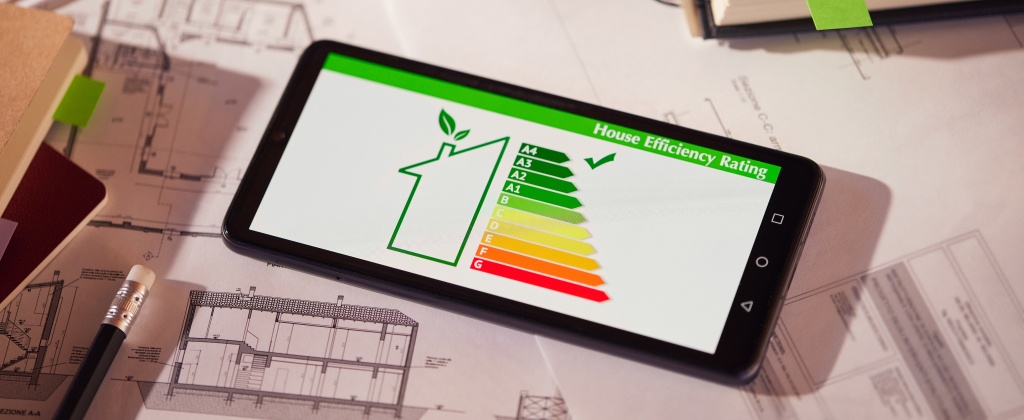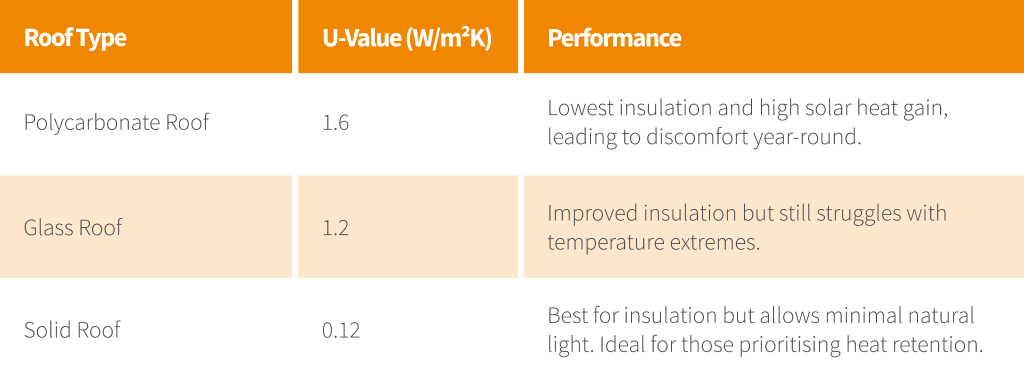Understanding Conservatory U-Values

When it comes to creating a comfortable and energy-efficient conservatory, understanding U-values is key. This critical metric measures insulation performance, helping you make informed decisions about your conservatory’s roof and overall energy efficiency, reducing energy bills, and ensuring your conservatory feels just right – whatever the weather.
Let’s dive into U-values and discover why SupaLite roofs are transforming conservatories across the UK.
What Are U-Values and Why Do They Matter?
Simply put, a U-value measures how much heat is lost through a material. The lower the U-value, the better the material is at keeping heat inside your conservatory. Think of it as the ultimate scorecard for insulation: a low U-value means less heat escapes, and your space stays warm and cosy during winter.
In practical terms, the U-value of your conservatory roof can directly impact your comfort and energy costs. For example:
- Polycarbonate roofs, common in older conservatories, have U-values of around 1.6 W/m²K, meaning they are not great at holding heat.
- SupaLite tiled roofs, on the other hand, boast U-values as low as 0.12 W/m²K, dramatically improving insulation and reducing energy consumption.
Why Do We Use U-Values?

U-values aren’t just about comfort – they’re also a legal requirement. Modern UK building regulations set strict standards for energy efficiency, and upgrading your conservatory roof with materials offering lower U-values can help ensure compliance while reducing your energy usage.
- Purpose: U-values allow homeowners to measure and compare the insulation performance of materials.
- Relevance: Low U-values are vital for meeting UK regulations and creating energy-efficient conservatories.
- Benefits: Improved insulation reduces energy bills, enhances indoor comfort, and aligns with sustainability goals.
U-Value Calculator – How Do We Calculate a U-Value?
The calculation of U-values might sound technical, but understanding the basics shows why the materials used in SupaLite roofs are so effective. The U-value depends on three key factors:
- Material thickness: Thicker layers of insulation improve performance.
- Thermal conductivity: This measures how well a material conducts heat – lower values mean better insulation.
- Material layers: Multi-layered systems like SupaLite’s combine advanced tiles, insulation, and underlayments to significantly reduce heat loss.
What Is the Best U-Value for a Conservatory Roof? How U-Values Compare Across Roof Types
Here’s a quick look at how different roof types perform in terms of U-values and G-values:

Why Does Your Conservatory Roof Type Matter?
The type of roof you have plays a massive role in the thermal performance of your conservatory. For many homeowners, a polycarbonate or standard glass roof was the default choice when the conservatory was built. While they might seem functional, these older designs can leave you battling extreme temperatures!
Polycarbonate roofs, for example, are known for their high U-values, meaning they’re poor at insulation. During winter, they let heat escape and in summer they let in too much solar heat, turning your conservatory into a furnace. Standard glass roofs perform slightly better but still struggle to provide the balance you need for a truly comfortable space.
With their exceptionally low U-values, SupaLite solid roofs are a game-changer. The U-values are exceptionally low – This means superior insulation that keeps the heat in during winter and a more stable, pleasant environment year-round.
Top Tips for Achieving Low U-Values

Achieving the best possible U-value isn’t just about the roof material – it’s also about proper installation and thoughtful design. Here’s how you can ensure your conservatory reaches peak energy efficiency:
- Upgrade to high-performance materials: SupaLite roofs combine multi-layered insulation with advanced tiles for exceptional results (that’s why we install them).
- Focus on professional installation: Poor installation can lead to heat leaks, undermining the benefits of even the best materials. You need to have a qualified conservatory roof installer to fit your roof.
- Consider the whole picture: Adding insulated walls and flooring alongside a SupaLite roof can further enhance your conservatory’s performance.
Choosing the Best Conservatory Roof for Energy Efficiency and Comfort
Upgrading your conservatory isn’t just about aesthetics – it’s an opportunity to improve energy efficiency, reduce costs, and enhance your home’s comfort. By understanding U-values, you’re in a better position to choose materials and designs that work for your needs.
At Lightweight Roofing Solutions, we install SupaLite tiled conservatory roofs. Their roofs are designed to exceed modern standards, offering a solution that transforms your conservatory into a truly liveable space, no matter the weather.

 Opening Times: Mon - Fri: 9am - 5pm | Sat: 9am - 12pm
Opening Times: Mon - Fri: 9am - 5pm | Sat: 9am - 12pm  Support Helpline: 0333 456 5776
Support Helpline: 0333 456 5776 


 99 Facebook reviews
99 Facebook reviews


